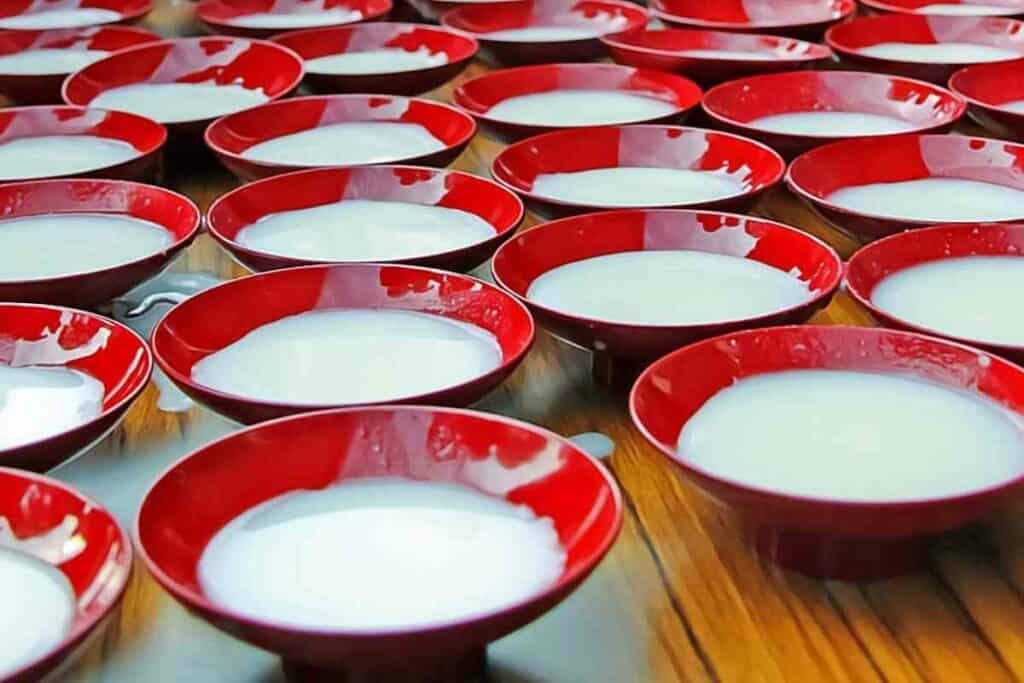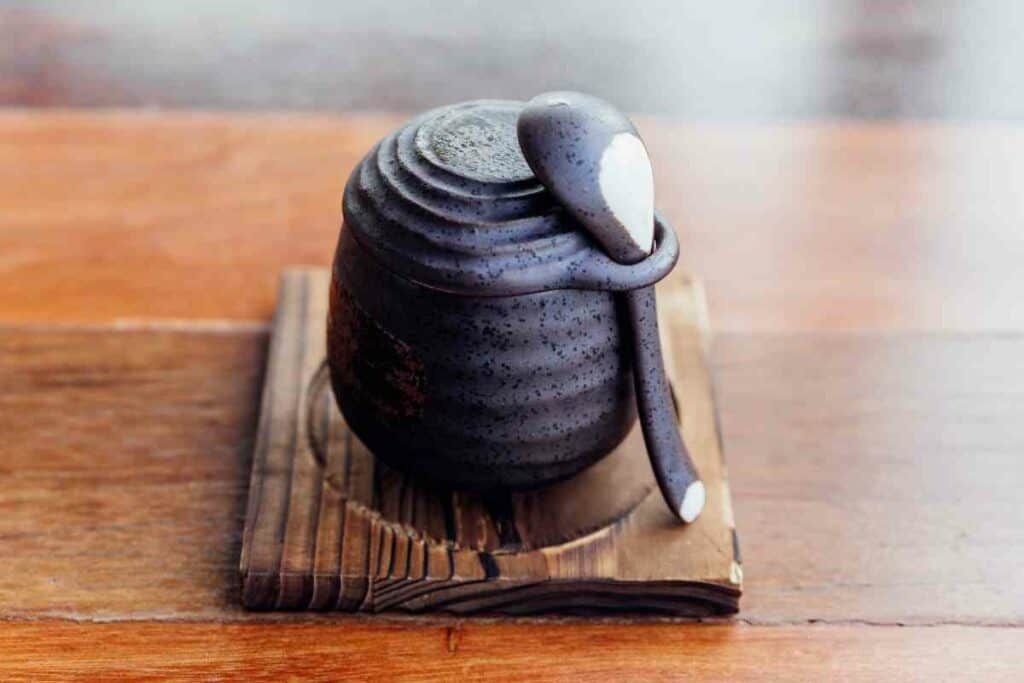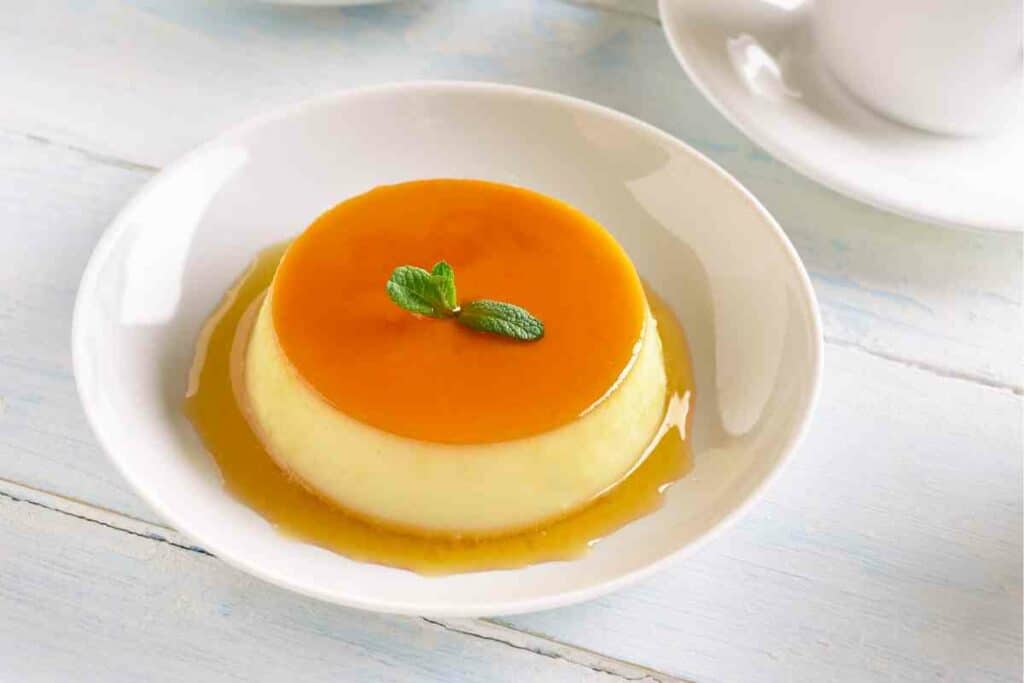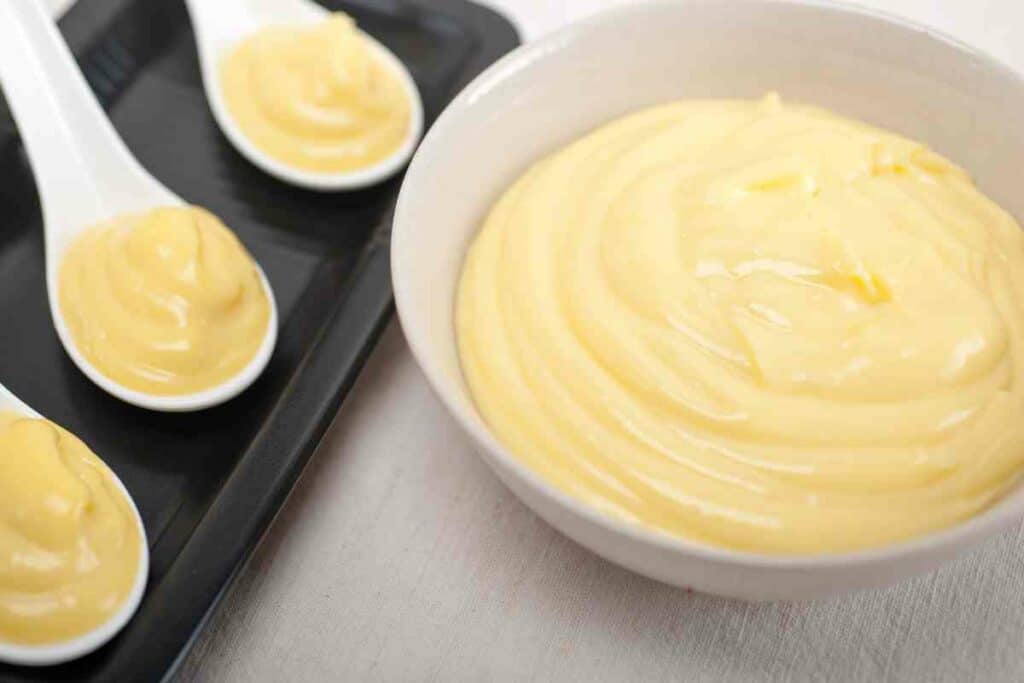The charming Japanese milk pudding with its delicate creamy appearance is a dessert popular with people all of ages.
Surprisingly, it’s incredibly easy to make at home, with only a few simple ingredients and basic kitchen utensils required.

So, let’s take a look at how to make Japanese milk pudding.
Table of Contents
The History of Japanese Milk Pudding
Before diving in and making this delicious pudding, it’s important to understand some of the history behind its creation.
Japanese milk pudding, also known as purin, has a rich history dating back to the early 20th century. It was in the Meiji era (1868-1912) that Japan opened up to more Western influences, including Western cuisine, and the milk pudding can be traced back to this time.

This era was a period of rapid modernization and Westernization and led to the introduction of many Western foods in Japan.
In the 1920s and 1930s, the first commercialized pudding products started to emerge in the Japanese market, this is when the milk pudding started to gain popularity.
In 1933, the first powdered custard mix was created by Momofuku Ando, the creator of instant ramen and founder of Nissin Foods. This pudding mixture was one of the first commercially available pudding mixtures available in Japan.
During the time of World War II and the period immediately after, milk and dairy products were scarce due to supply shortages and rationing.
Therefore, milk pudding became a luxury for many Japanese people. It was seen as an indulgent extravagance during these challenging times, and people associated milk pudding with a time when ingredients were more plentiful.
Milk pudding became a much-loved dessert in Japan over the years, and could be easily found in dessert shops, convenience stores, and supermarkets.

The traditional Japanese milk pudding is a smooth, creamy dessert, made from eggs, sugar, and vanilla extract. Usually, it is baked in individual ramekins, or molded in a larger container, chilled, and served with caramel sauce.
The recipe generally remains consistent, but some variations have appeared over time, usually including different flavors and toppings, such as matcha (green tea), chocolate, and fruit.
Some also feature intricate designs such as cute animal shapes and delicate patterns, all adding to the visual appeal of the pudding. It can be enjoyed chilled or at room temperature.
This pudding is an incredibly popular dessert in Japan and many other countries. Its popularity is partly due to its delicate, creamy appearance, and distinct flavor that takes people back to their childhoods, when many enjoyed such indulgent puddings. As the years have gone by, many have experimented with making their own milk puddings at home, adding different flavors and fruits.
As well as looking impressive on a pudding display, the milk pudding can easily be adapted to suit different tastes and diets.
Dairy-free versions are easy to make, and different types of milk create different, subtle flavors in the pudding.
Almond milk creates a slightly nuttier flavored pudding, soy milk is sweet and gives the pudding a slightly nutty taste, and oat milk creates a beautifully cream-colored pudding, rich in flavor.
Whether catering for children, or an upscale dinner party, this delightful pudding will please everyone who tastes it with its sweet, creamy texture and wonderfully unique appearance.
See later – 25 Must-Try Japanese Desserts
How to make Japanese Milk Pudding

This rich and creamy dessert, which is also known as purin, is incredibly popular in Japan.
The basic ingredients are:
- milk
- sugar
- eggs
- and vanilla extract
Also Read ?
The basic recipe to make Japanese milk pudding is as follows:
Ingredients:
- 2 cups of milk
- ½ cup granulated sugar
- 3 large eggs
- 1 teaspoon vanilla extract
Caramel sauce:
- ½ cup granulated sugar
- 2 tablespoons water
Instructions:
- Preheat your oven to 325°F (165°C). An oven-safe dish or individual ramekins are best for baking the pudding.
- In a saucepan, heat the milk over medium heat, it should be warm but not boiling. Remove from heat and set aside.
- In a mixing bowl, whisk the eggs and sugar together until well combined.
- Slowly pour the warm milk into the egg mixture and whisk continuously.
- Add the vanilla extract to the mixture and whisk until everything is well mixed together.
- Next, you will need to prepare the caramel sauce. Heat the sugar and water in a small saucepan over medium heat. Allow the sugar to melt and turn golden brown. Swirl the pan occasionally to ensure even caramelization. Make sure you take care when handling the caramel, as it will be incredibly hot, and can burn.
- Pour the caramel sauce into the bottom of the oven-safe dish or ramekins, swirling the mixture ensures the bottom is evenly covered.
- Carefully pour the milk and egg mixture over the caramel sauce. Using a spoon to gently smooth the surface should get rid of any bubbles.
- Place the dish or ramekins into a larger baking pan or a deep baking dish. Fill the larger pan with enough hot water to reach halfway up the sides of the dish or ramekins. This water bath helps to cook the pudding evenly.
- Carefully transfer the baking pan to the preheated oven and bake for about 40-50 minutes, or until the pudding is set but still slightly jiggly in the center.
- Once the pudding is done, remove it from the oven and let it cool to room temperature. The pudding should be left to refrigerate for at least a few hours or overnight to allow it to fully set.
- Running a knife around the edges of the dish or ramekins will loosen the pudding when it is ready to serve. Place a serving plate on top and invert it to release the pudding.
- Japanese milk pudding is usually served chilled. It can be enjoyed as is or can be garnished with fresh fruits, whipped cream, or mint leaves for extra flavor and presentation.
The Different Types of Milk Pudding
Although basic milk pudding is delicious as it is, over the years, many people have adapted the recipe, adding new and exciting flavors to the popular dessert.

The creamy, sweet flavor makes the perfect base for layering flavors and experimenting with different techniques.
Here are some popular styles of Japanese milk pudding:
- Matcha purin: Matcha is a finely ground green tea powder, and Matcha purin is a variation of the milk pudding that contains this exciting flavor. The matcha powder is added to the basic pudding mixture, this gives it an impressive green color and a subtle taste. More matcha powder is usually sprinkled on top, along with a spoonful of whipped cream.
- Coffee purin: Caffeine lovers will enjoy this one. Strong brewed or espresso coffee is added to the custard mixture, which creates a deliciously intense coffee flavor. For an added touch, coffee syrup is often drizzled over the top, and coffee beans are added for an attractive garnish.
- Fruit purin: This style of Japanese milk pudding includes delicate pieces of fruit added to the custard mixture. These are often placed at the bottom of the dessert cup before the pudding mixture is added. Popular fruit choices include peaches, mangos, and strawberries. Many people enjoy fruit purin as the fruit gives a refreshing burst of flavor when eating the creamy pudding.
- Soy milk purin: This is an alternative to regular purin, which is made with cow’s milk. Soy milk is a great dairy-free option for vegans, or though who follow a dairy-free diet. The preparation process is similar, the only difference is that soy milk replaces dairy milk. The pudding has a slightly nuttier flavor to it, which many people enjoy.
- Black sesame purin: For this version, black sesame seeds are ground into a paste and are then added to the basic custard mixture. This creates a distinctive nutty flavor. The pudding often has a light grey appearance with the addition of black sesame and is often garnished with seeds to add to the look of the pudding.
- Yuzu purin: Yuzu is a citrus fruit native to Japan. It is known for its perfumed scent and sharp flavor. To add this to the milk pudding, the yuzu zest or juice can be incorporated into the custard mixture. This creates a refreshing variation. It is often garnished with yuzu zest, or a slice of the fruit for added flavor and visual appeal.
These are the most popular variations found throughout Japan. Japanese cuisine is known for its delicacy and attention to detail, so there are many more flavors out there to enjoy.
Final Thoughts on How to Make Japanese Milk Pudding
Japanese milk pudding has gained international acknowledgment recently, with many Japanese-style pudding shops opening across the globe.
The smooth, velvety texture and delicate flavors and aromas are proving to be a huge hit with pudding enthusiasts all over the world!
Making your own Japanese milk pudding is easy. Make sure you experiment with flavors and ingredients to find your perfect pudding.
- Japanese Traditional Sweets (Wagashi): A Guide to Their Origins and Varieties
- A Taste of Japan in Every Bite – Japanese Candy & Snack Box Review
- Bubble Tea vs Boba Compared: What’s the Difference?
- Best Izakaya Foods for a Relaxed Night Out (My Top 10 Picks)
- Edo Kiriko Whiskey Glasses (Japanese Heritage in Every Pour)
- Japanese Viral Foods on Social Media (Discover the Top 10)









